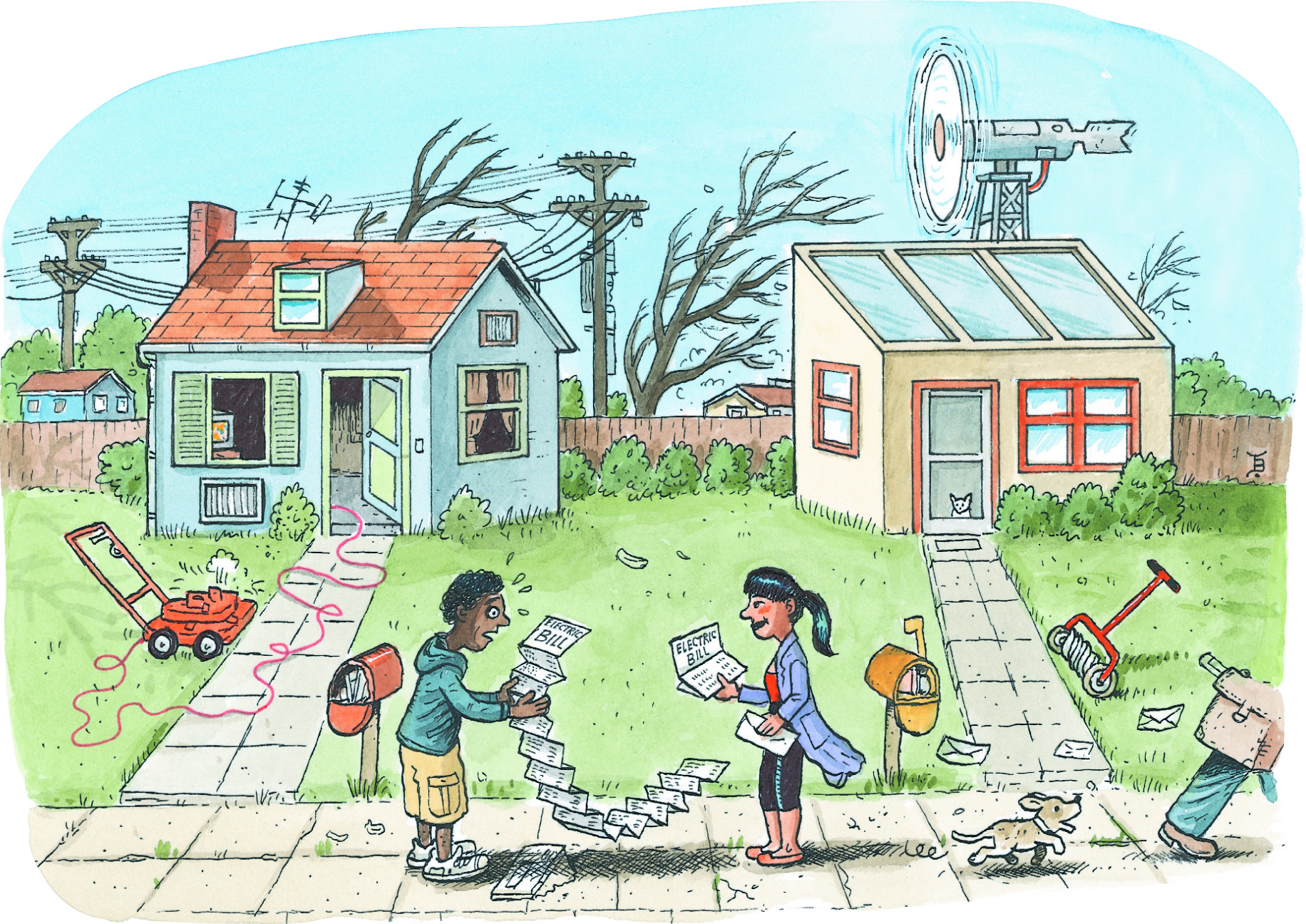
Overview
In this section you will find materials that support the implementation of EarthComm, Section 5: Renewable Energy Sources - Solar and Wind.
Learning Outcomes
- Carry out an investigation of a solar heating system.
- Carry out an investigation of wind power.
- Analyze data to explain trends in solar and wind energy consumption in the United States.
- Obtain and evaluate information about the advantages and disadvantages of solar and wind energy resources.
Inquiring Further
- To learn more about solar-thermal electricity generation, visit the following web sites:
Concentrating Solar Power, U.S. Department of Energy
Examines the technologies that are used to concentrate sunlight onto receivers that collect solar energy and convert it to heat. This thermal energy can then be used to produce electricity.
Solar Heating and Cooling, European Commission
Describes solar-thermal systems, including technology and the potential for the solar-thermal industry.
Solar Parabolic Trough, U.S. Energy Information Administration
Looks at the history of Luz International and its attempts to build solar thermal power plants.
Solar Explained, U.S. EIA
Considers the ways in which solar energy can be used as a natural resource.
- To learn more about photovoltaic electricity, visit the following web sites:
How do Photovoltaics Work?, NASA
Explains how photovoltaic technology has evolved, how it works, and where the technologies are typically applied.
Photovoltaics, U.S. Department of Energy
Looks at how photovoltaic materials and devices convert sunlight into electrical energy.
Solar photovoltaic, European Commission
Describes photovoltaic technology and photovoltaics as an industry.
- To learn more about the history of wind energy or solar energy, visit the following web sites:
Illustrated History of Wind Power Development, TelosNet
Examines the historical development of wind power.
History of Wind Power, U.S. EIA
Looks at the history of wind energy use.
History of Wind Power, U.S. Department of Energy
Looks at the historical uses of wind energy.
History Of Solar Power, AMECO
Reviews the development of solar power over time.
- To learn more about wind farms, visit the following web site:
Wind Basics, U.S. Department of Energy
Looks at how electricity is generated from wind.
How Wind Turbines Work, U.S. Department of Energy
Examines how wind turbines make electricity.
Resources
To learn more about this topic, visit the following web sites:
Solar Heating
Solar Basics, U.S. Department of Energy
Reviews the technologies and ways in which solar energy can be converted into electricity.
Solar For Everyone, U.S. Department of Energy
Explains how solar heating works, including descriptions of different types of solar collectors. Also discusses why solar energy is an important resource. Includes directions for making a solar air heater and a glossary of relevant terms.
Solar Heating and Cooling, European Commission
Describes solar-thermal systems, including technology and the potential for the solar-thermal industry.
Photovoltaics
How do Photovoltaics Work?, NASA
Explains how photovoltaic technology has evolved, how it works, and where the technologies are typically applied.
Solar Photovoltaic Cell Basics, U.S. Department of Energy
Looks at how photovoltaic materials and devices convert sunlight into electrical energy.
Solar photovoltaic, European Commission
Describes photovoltaic technology and photovoltaics as an industry.
Wind Power
Wind Basics, U.S. Department of Energy
Looks at how electricity is generated from wind.
Overview of Wind Energy in California, California Energy Commission
Gives an overview of wind energy.
Wind Energy, European Commission
Considers the value of wind energy and how it is transformed into electricity.
